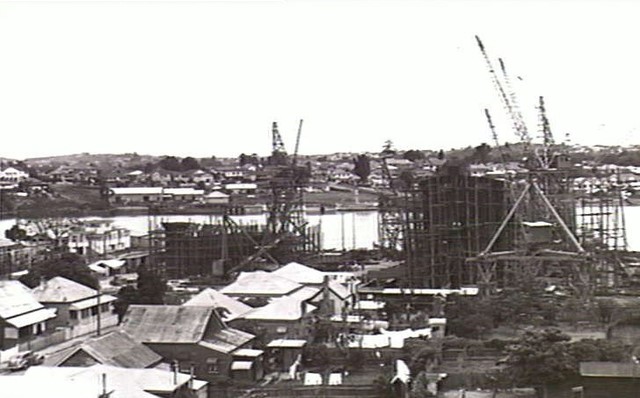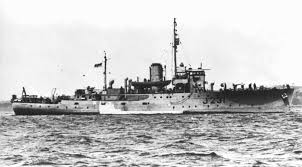
Brisbane’s significance as a naval port was exemplified by its shipbuilding capacity and the deployment of vessels that shaped the war’s outcome. Evans Deakin & Co Ltd, located in the city, was a prominent shipyard that built numerous vessels for the Royal Australian Navy (RAN), including the Bathurst-class corvettes. These versatile ships, designed for minesweeping, anti-submarine warfare, and convoy escort duties, became a cornerstone of Australia’s naval fleet.
One such vessel, HMAS Bundaberg, was laid down in Brisbane on 7 June 1941 and launched on 1 December 1941. The ship was the first RAN warship named after the Queensland city and represented the vital contributions of Brisbane’s shipyards to the war effort. The corvette later operated alongside numerous Allied vessels, showcasing Brisbane’s centrality to naval strategy.

Submarine operations in Brisbane
In addition to shipbuilding, Brisbane served as a major Allied submarine port during the war. It became the primary base for American submarines, while Dutch submarines operating from Fremantle also used the port of Brisbane. The Netherlands East Indies Forces Intelligence Service (NEFIS), based at Camp Columbia, coordinated submarine operations from the city. These missions focused on conducting reconnaissance, disrupting Japanese supply lines, and gathering intelligence. Brisbane’s dual role as a naval port and intelligence hub made it indispensable to the Allied war effort, enabling coordinated actions across land, sea, and air.

Newstead Park and Bathurst-class corvette memorials
Newstead Park stands as a testament to Brisbane’s naval contributions during World War II. The Royal Australian Navy World War II Bathurst Class Corvette Memorial honours the Australian-built corvettes and their crews. The memorial includes the names of 56 Australian and four Indian vessels but, notably, omits recognition of foreign ships that were commissioned into the RAN, such as the Dutch minesweeper Abraham Crijnssen.
The Dutch and Brisbane – the story of Abraham Crijnssen
HNLMS Abraham Crijnssen, a Dutch minesweeper known for its creative escape—disguised as a tropical island—from Japanese-occupied territories in the Netherlands East Indies, was commissioned into the RAN as HMAS Abraham Crijnssen on 28 September 1942.
The ship carried out minesweeping, convoy escort, and training duties. Its most notable engagement occurred on 26 January 1943 while escorting a convoy through Bass Strait. Alongside HMAS Bundaberg, Abraham Crijnssen detected a suspected submarine and conducted an aggressive depth charge attack. Although no wreckage was found, the incident underscored Brisbane’s importance as a launch point for coordinated naval actions.
Recognising Brisbane’s naval heritage
Brisbane’s naval history, exemplified by the construction of Bathurst-class corvettes, its role as an international submarine base, and its connection with intelligence services, offers a compelling narrative of resilience and cooperation. As the city continues to preserve its World War II heritage, these stories serve as enduring reminders of its critical role in shaping the Pacific Theatre.
